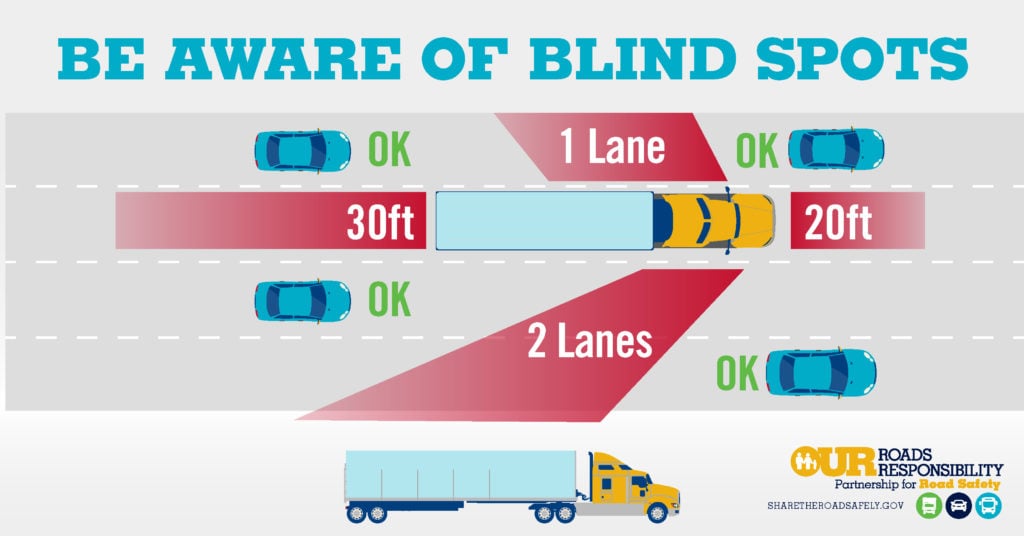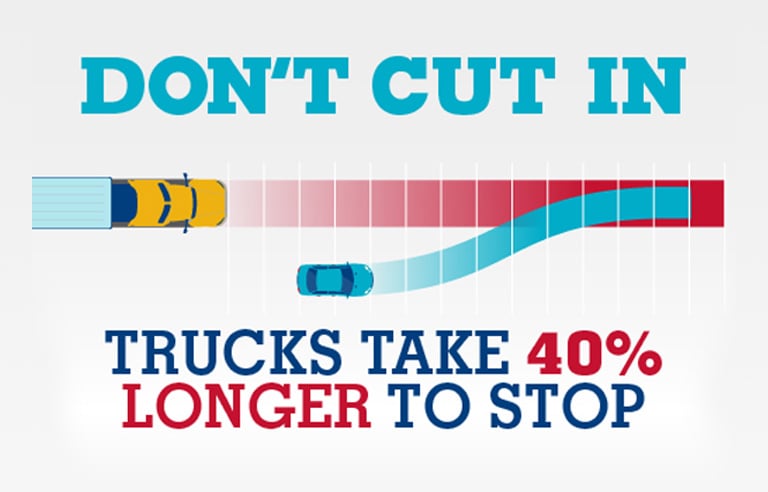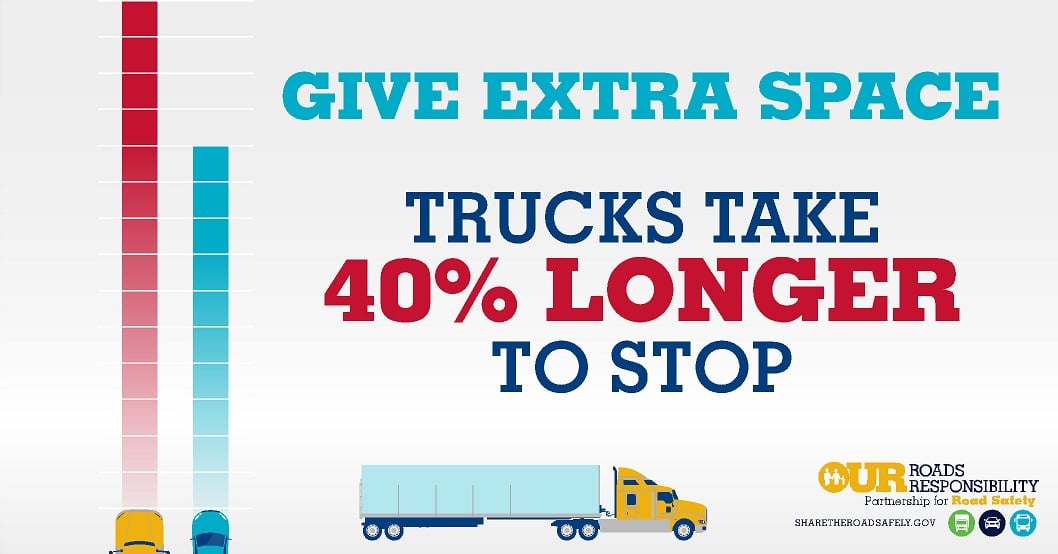
What Makes Motorcycle Accident Lawsuits Different?
Motorcycle riders have the same rights as all other road users, yet they are often overlooked or disregarded by other
D'Amore Personal Injury Law, LLC
Serious Injury Lawyers Proudly Serving
Baltimore, Annapolis, & Washington, D.C.
More than 250,000 accidents involving large trucks and small automobiles occur each year. Approximately 97% of these accidents are caused by the surrounding drivers in smaller vehicles. These numbers are a 52% increase from 2009, the year containing the lowest recorded number of truck-related incidents since 1975, when the data collection began. Accidents that involve a large semi-truck or other large commercial vehicle are much more perilous than those including two smaller automobiles and can include the casualties of drivers and pedestrians. This is due to multiple factors. Semi-trucks have larger blind spots, take longer to stop, are less maneuverable, and their operators are often overworked and fatigued.

The blind spots in a regular automobile are much smaller than those in a large commercial vehicle. The main blind spots in an automobile are in the driver’s peripheral vision, or directly next to their vehicle. Many newer cars are now equipped with sensors that can alert the driver if another car is in their blind spot.
Semi-Trucks and other large commercial vehicles have much larger blind spots and more of them. Most large commercial vehicles contain large blind spots directly in front, directly behind, and along each side of the vehicle. The right side has the largest blind spot, which spans the entire length of the truck and extends three lanes over. The left side contains a blind spot as well, however ,it is much smaller than that on the right.( Click here to see a diagram of the blindspots on a semi-truck.) Most automobile drivers have never even been inside a Semi-Truck or large commercial vehicle. Therefore, most are unaware of the number and extent of these danger zones. This leads to many drivers operating near and around Semi-Trucks in a risky way.
SAFETY HINT: The easiest way to know if a truck driver can see you, is if you can see the face of the driver in their mirrors. If you can see the face of the driver, then they can see you. If you are in a blind spot of a large truck, you are in danger. You should always attempt to stay out of a truck’s blind spot, especially when the driver is backing up, turning, or changing lanes.
Following distance is another factor in crashes involving large vehicles. The following distance should be increased when behind a large commercial vehicle. This is because one of their blind spots is directly behind the truck. You should maintain a following distance between 20 and 30 car lengths when driving behind a truck. Another trick is if you can see both of the trucks’ side mirrors then you are a safe following distance. This not only keeps you out of a blind spot, but also allows you more reaction time if something in front of you occurs that you could not see due to the large vehicle blocking your vision. Another benefit of increased reaction time- road debris. Large pieces of dangerous road debris can pass right under Semi-Trucks and commercial vehicles, but under your car. Things such as tires, gas cans, bricks and even pieces of furniture that have fallen from other vehicles will go right under a big truck, but will cause serious harm to the driver and passengers of the vehicles following them too closely. Many divers have also been unable to stop fast enough when behind a large truck and have either crashed into it or even driven underneath it, without the truck driver even knowing.

Accidents also occur when cars attempt to pass a large truck, causing them to remain in the truck’s blind spot for an extended period of time. When passing a truck, attempt to do so on the left side, as the blind spot is much smaller. You should maintain a safe speed and not pull in front of the truck until you can see the entire cab of the vehicle in your rearview mirror. This ensures the driver can see you and gives them enough stopping distance if needed. If you pull too close in front of the truck and then need to slow suddenly, the truck driver will not have a long enough stopping distance and will crash into your vehicle.
If a truck is attempting to pass you, reduce your speed slightly to ensure your vehicle will end up farther behind the truck and out of any of its blind spots. Avoid being beside a truck for long periods if possible, and especially when they are turning. Most large commercial vehicles must swing in the opposite direction of their turn to create enough space for the rest of the vehicle to turn. Do not move next to the vehicle when they are doing so, or you will get hit.
Another thing to remember when driving near large trucks is to never use your bright headlights. Trucks have much larger mirrors that small automobiles and they reflect the light to the driver which can cause temporary blindness. Click here For more information on other unsafe maneuvers drivers do when near large commercial vehicles.

The different stopping distances between trucks and automobiles is often forgotten by most drivers. Trucks can take 20-40% farther than a normal car to stop. For example, a normal car driving at 65 miles per hour takes approximately 300 feet to come to a complete stop, while a loaded semi-truck driving at the same speed takes approximately 600 feet. In other words, a car takes one football field to stop and a truck takes two football fields to stop. If a truck is not allowed enough stopping distance and hits a smaller vehicle in front of it, the smaller vehicle, weighing about 3,000 pounds, would most likely be crushed by the 80,000-pound truck. Click here to watch a video showing the different stopping distances between a large semi-truck and small car.
Five main factors can cause the stopping distance of a truck to fluctuate:
Drivers of regular and commercial vehicles both take roughly 1.5 seconds to react. However, truck drivers are sat much higher than normal cars, and can, therefore, spot obstacles from greater distances. This is an advantage to truck drivers as they can begin stopping or maneuvering around the obstacle much sooner.
However, accidents can still occur as cars traveling behind the truck who are too close are at risk of hitting the truck or driving beneath it if they do not have enough stopping time. The speed of a vehicle is a simple factor: objects moving at faster speeds are going to take longer to slow down. If you are traveling near a truck at high speeds, you should increase your following distance to around 40 car lengths. Road conditions such as bad weather should also be an indicator to increase following distance behind trucks as wet roads are hard to stop on for all vehicles.
The main difference between trucks and cars when it comes to stopping is the braking system each machine uses. Normal cars use a hydraulic system that uses liquid to stop the car and does so in a fast manner. Trucks, however, use air brakes, which take longer to work. In a truck, when the driver applies pressure to the brake pedal, air builds up across the length of the truck. The brakes begin to slow the vehicle only after the air fully builds. Click here to watch a video that explains the difference between Hydraulic brakes and air brakes in more depth.
There are two issues all drivers face when on the road: Cell phone-related distractions and exhaustion. These are some of the leading causes of car accidents. Truck drivers are known for driving long hours and may face exhaustion more than the average automobile driver. However, all drivers with a Commercial Driver’s License, which is required when driving a large commercial vehicle, are held to higher standards when it comes to these issues and face more serious consequences.
Drivers who own a CDL can risk losing their certification if they commit a road violation. Two organizations regulate the rules for truck drivers, one is at a state level and the other at a federal level. The Federal Motor Carrier Administration or FMCSA regulates tracking rules at the federal level. These rules can be found in Title 49 of the Code of Federal Regulations. These rules include things such as the 2012 banishment of cell phones for all interstate drivers while driving a large vehicle, and an 11 hours limit on driving without sleep. Click here for the specifics on these rules. The laws were created to protect Semi-Truck drivers and the drivers of cars around them. However, you should still be aware of how focused the truck driver near you happens to be. Some drivers will break the rules and will drive for longer periods than permitted. On top of that, many companies also require the driver to have a cell phone on them as a means of communication. When driving near large vehicles on long highways and interstates, be aware that while there are laws in place to protect everyone, many drivers break them.
Driving near large commercial vehicles can be dangerous. The important thing is to remain aware of the differences in vehicle operation and increased risks associated with large commercial vehicles and Semi-Trucks. Only attempt safe maneuvers when driving around them. Staying out of blind spots and increasing your following distance will ensure your safety as well as that of the person driving the truck.
If you or a loved one has been involved in an accident with a semi-truck and sustained injuries, contact our experienced attorneys. We will help you every step of the way from dealing with insurance companies to winning your case to getting you the compensation you deserve to begin rebuilding your life. Free consultation and there are no fees unless we win.
Fill out the form below and we will contact you.
Or, give us a call at

Motorcycle riders have the same rights as all other road users, yet they are often overlooked or disregarded by other

Understanding Medical Malpractice Settlements in Maryland Medical malpractice cases can be emotionally and financially devastating for victims and their families.

How Long Does It Take to Settle a Traumatic Brain Injury Case in Maryland? Traumatic brain injuries (TBIs) can have